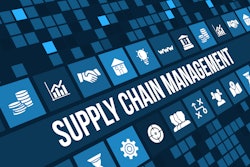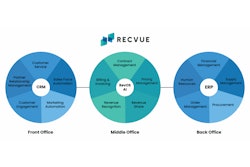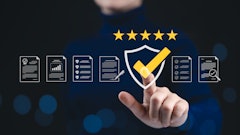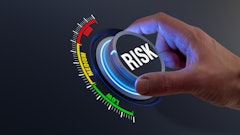
In today’s volatile economy, the need to continually reduce costs is higher than ever while the risks associated with supply chain disruptions are growing in both frequency and severity.
Traditional approaches to cutting costs relied heavily on negotiations targeting a supplier’s price, without assessing the impact on the supplier’s financial risk. However, by targeting price alone, some suppliers are left with limited means to address financial issues. This often exposes the purchaser to operational failures, regulatory violations, and supplier instability as the suppliers lack the means to cover all their obligations.
Instead, cost management today requires a multi-faceted strategic approach, one that simultaneously drives efficiency, reduces overhead, and safeguards the enterprise against increasingly complex risks. This approach assesses cost more broadly, looking at the total cost of ownership and should cost. With strategic suppliers, this prompts a collaborative conversation that seeks win-win outcomes—lower cost to the purchaser without jeopardizing the competitive position and financial stability of the supplier.
Forward-looking organizations are embracing a few simple interrelated imperatives to achieve this: Direct cost reduction, operational efficiency, and proactive risk management. Each of these serves as a lever to unlock measurable savings while protecting the business, especially when informed by data, enabled with technology, and based on a holistic view of the supply chain.
1. Direct cost reduction through visibility and strategic procurement
The first step is to gain visibility across the supply chain to identify opportunities for cost reduction. A key element of this is understanding the cost drivers. Research shows that 32% of supply chain disruptions originate beyond Tier 1 suppliers, highlighting the importance of monitoring Tier 2 and Tier 3 relationships. Organizations that understand the full supplier ecosystem are better equipped to surgically target cost drivers that affect the overall total cost of ownership for goods and services. In doing so, they may consolidate spend, introduce competition, negotiate better terms, and reduce risk.
Automation supports these efforts by optimizing procurement workflows, facilitating robust sourcing, enabling efficient supplier onboarding, and managing contractual documents and requirements. Centralizing data on supplier information including but not limited to supplier certifications, insurance and performance metrics allows procurement teams to collaborate, communicate, and operate strategically rather than reactively and administratively. Thereby reducing overhead. Real-time information monitoring further ensures that gaps and vulnerabilities are addressed before they escalate into crises that could lead to a range of impacts, such as fines, contract penalties, damaged reputation, and legal fees. A regulatory fine, for example, related to a poor performing supplier could range from $10,000 per violation to multi-million-dollar enforcement actions. The longer-term issue is that these violations often result in reputational impact, lost customer confidence, and cost related to oversight. These types of impacts cascade through the supply chain, layering on cost.
Visibility and early recognition provide procurement leaders with the ability to make informed decisions, weigh potential impacts, and act purposefully. As such, the typical result is higher operational and financial performance with lower risk.
2. Operational efficiency through integrated systems and data-driven insights
Operational efficiency goes beyond trimming budgets and right-sizing resources—it must focus on eliminating waste, improving productivity, and ensuring resources are applied where they generate the greatest value. The only way to accomplish this is by leveraging the power of information.
It is important to note that we are not speaking about data. Data is a raw material that must be organized, analyzed, and converted into insights and information. Armed with information, however, companies develop strategies, actions, and measurements to drive efficiency. Leading companies integrate information from multiple sources such as procurement; safety; operations; environmental, social and governance (ESG); IT; legal; and suppliers. In so doing, they create a unified view of supply chain performance, compliance, and risk.
Scenario modeling and risk scoring are also key tools in this effort. The best organizations model potential disruptions, assess scenarios, and test assumptions. They then act on this information to plan and execute changes that allow them to be agile and flexible long before issues arise. Risk scoring evaluates suppliers on a range of criteria, including location-based threats, financial risk, ESG practices, safety maturity, and operational inefficiencies. This enables leaders to prioritize attention on high-risk suppliers, anticipate disruptions, and take preemptive action—effectively taking control of situations.
Also, automation and real-time monitoring enhance efficiency. Traditional audits and static reviews are not only slow but are focused on historical events. They fail to forecast potential future incidents. Continuous validation of certifications, insurance, and safety records combined with centralized information management ensures gaps are caught early. Proactive monitoring—such as tracking leading safety indicators such as near-miss reporting —reduces the likelihood of injuries and costly operational interruptions. Proactive monitoring of business and cyber risks offers a lens into what might happen, allowing leaders to make changes in an orderly and methodical way rather than in a hurried crisis management process. Optimizing in this way not only lowers costs but also increases the organization’s agility, empowering teams to respond rapidly to market fluctuations, continuity of supply challenges, and a range of other events (e.g., climate, geopolitical, labor, public health).
3. Proactive risk management as a strategic cost saver
Modern risk management must evolve beyond monitoring and mitigation to proactive, holistic risk management grounded in verified information that drives early and continual identification of risks, vulnerabilities, and opportunities. Companies that embed risk management across procurement, safety, operations, and supplier management are better positioned to sustain performance in the face of disruptions. Multi-jurisdictional regulatory intelligence is essential—compliance obligations now vary not just by geography, but by supplier type, spend thresholds, and contract scope. Technology can dynamically map obligations to suppliers, flag gaps automatically and reduce error-prone manual tracking.
Cross-functional information integration is another critical capability. By analyzing and combining insights from safety records, ESG scores, financial metrics, and operational capacity, organizations can make decisive, risk-informed decisions, whether that means auditing, halting work, or replacing a supplier. Real-time visibility across the supply chain allows teams to detect potential vulnerabilities in advance, reducing unplanned downtime by nearly 70%; avoiding costly fines and incidents; and protecting employees, customers, and brand equity.
Proactive supply chain risk management also strengthens financial resilience. Disruptions—from geopolitical events to material shortages—have been shown to consume as much as 45% of annual profits over a 10-year period. By identifying vulnerabilities early, modeling risks, and acting before disruptions occur, companies can safeguard revenue, maintain operational continuity, and preserve long-term profitability.
The interplay of cost, efficiency and risk
These three imperatives are most effective when pursued together. Focusing on one without the others can create vulnerabilities. Aggressive cost-cutting without operational insight may reduce procurement spend in the short term but create downstream delays or compliance violations. Operational improvements without a risk lens may inadvertently increase exposure to supplier instability.
The solution lies in data-driven integration. Unified systems that monitor supplier performance, regulatory compliance and operational metrics enable organizations to optimize spend, streamline processes, and reduce risk simultaneously. In an interconnected supply chain, a disruption in one region can ripple across multiple tiers. Only with holistic visibility can organizations respond decisively, prevent losses, and maintain service levels.
Investing in resilience for the long term
These things are no longer aspirational—they are essential. Organizations that adopt structured, technology-enabled risk management processes reduce unplanned downtime; avoid costly incidents and fines; and protect their workforce, customers, and brand. Most importantly, they build resilience into their supply chain, allowing them to thrive in an economy where disruption is the baseline.
By making these moves today, businesses can transform their supply chains from a source of cost pressure into a competitive advantage, delivering value through efficiency, risk reduction, and long-term stability. In an era defined by uncertainty, the smartest investments are those that simultaneously drive savings, operational excellence, and proactive risk mitigation.















